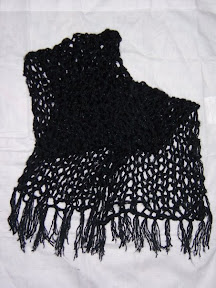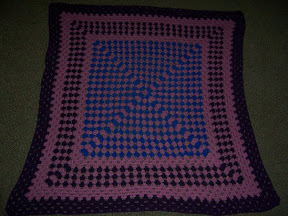
I went to a yard sale at a church nearby and found a Lion Brand learn to knit kit that had yarn in it. It was really cheap and came with needle and some yarn, so it seemed like a good buy. I decided to make this scarf using the two colors. I am really pleased with it because I like how the seed stitch pattern incorporates the two colors together in a way that is different from a normal garter or stockinette scarf would. After I blocked the colors looked even clearer and better.
Pattern:
Us #10 Straight needles
1 Lion Brand Jiffy Heather Blue (MC)
1 Lion Brand Jiffy White (CC)
CO 21 sts with MC
Work in seed st (K1, P1 across, end with K1, every row) for 1 inch, ending with a WS row
Work 2 rows with CC
Work 2 rows with MC
Work these four rows until scarf is desired length.
Cut CC
Work 1" with MC
BO
Weave in ends and block.




































